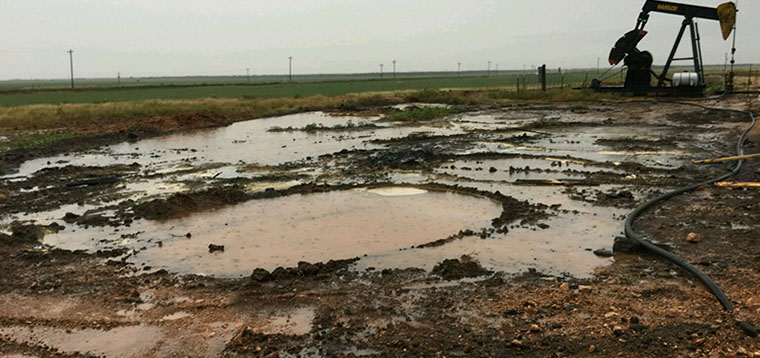
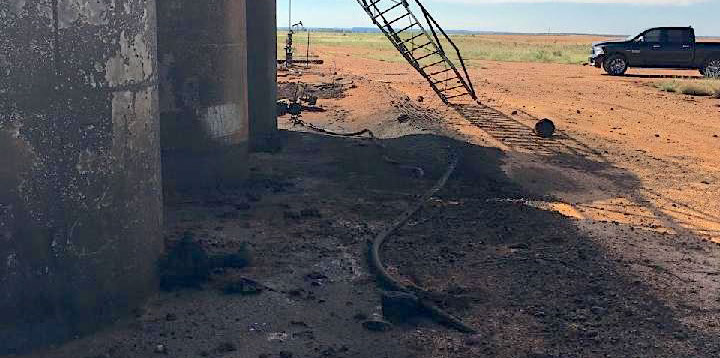
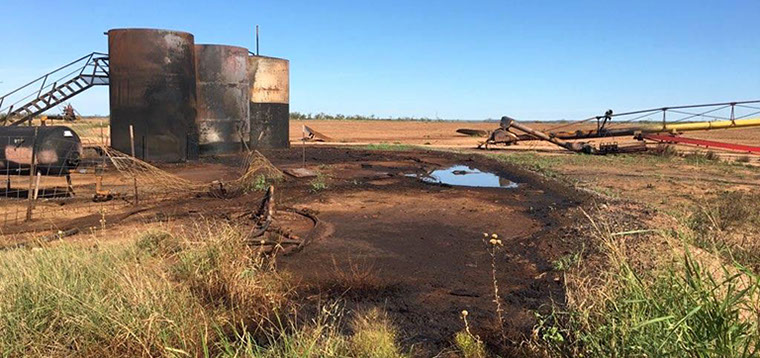
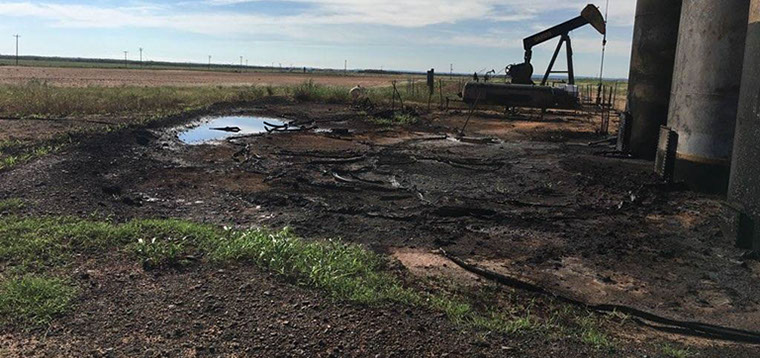
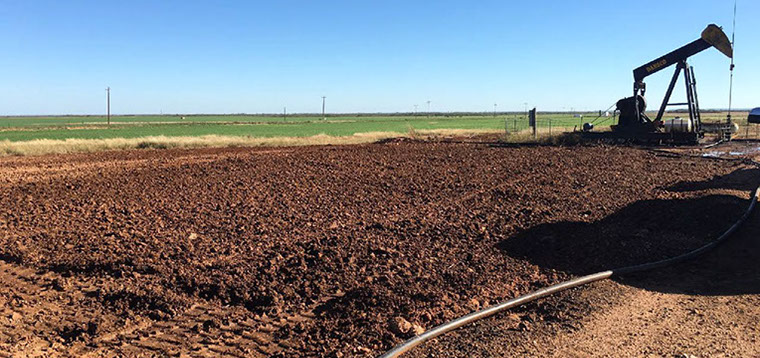
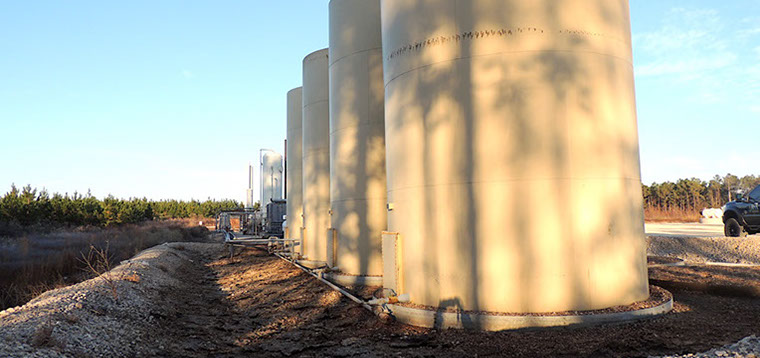
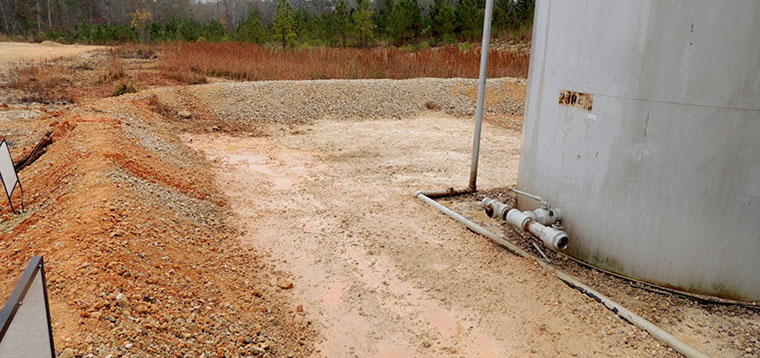

phenominally successful oil spill cleanup
In the early part of the last week of May, 2017 a tank battery leaked an estimated 140 bbl. of oil along with an almost equal amount of produced water into a hayfield due to a lightning strike. A thunderstorm then washed the spill down into a ditch and then 5.1 miles down a drainage district creek. After bulldozing around the greater area of contamination from the oil, there was so much on the surface and oozing out that both the Texas Railroad Commission and the United States EPA wanted all the dirt hauled off. Their fear was that another rain would again contaminate the creek after it had been cleaned up.
Environmental Recovery convinced these regulatory agencies to spread the contaminated soil back out over the area and then wash it with Displex, a highly concentrated aqueous-based cleaner and breaker for the removal of petroleum – and organic – based hydrocarbon accumulation on soils and surfaces. The idea was to both dilute and break down all the freestanding oil so that another rain would not carry it off and back into the creek. Afterwards, the plan was to go back, sample for TPH contamination and then remediate with Accel, which contains a concentrated and stabilized nutrient package that promotes and accelerates reproduction and growth of microorganisms present in the soil. However, after such sampling results were received no remediation was required, as all TPH levels were within regulatory limits. Based upon the pictorial evidence of the vast amount of contamination from well over 5,000 gallons of leaked oil on the ground this means that the Displex proved phenomenally effective all by itself in treating the pollution in the soil. It is also superior for routine cleaning operations in commercial and industrial establishments. Displex can be used on concrete, pilings, plant floors, off shore platforms, wellheads, tank bottoms, metal parts, rocks and other surfaces.
The area treated in this particular hayfield was approximately ¾ of an acre. 220 gallons of Displex was mixed with water at a 20 – 1 ratio and sprayed across the entire area. The savings over “dig and haul” were considered to be significant. Closure from the RRC was had in about 45 days.v
IN-SITU BIOREMEDIATION OF HYDROCARBON CONTAMINATED DRILL CUTTINGS
Drill cuttings generated during oil and gas drilling operations, in particular those from the oil based drilling mud system, are contaminated with hydrocarbons. Disposal of this material is regulated. The current industry practice is to haul them away to a land farm for bio-treatment. While the land farm is an attractive method, transportation and disposal expenses for such practice adds to operational costs. With landowner approvals, in-situ treatment of the waste material at the site is an attractive option to operators.
This method of remediation is based on the in-situ bio-treatment of drill cutting wastes, utilizing ACCEL™.
Treatment Procedure
- Treat cuttings with DISPLEX™ in storage area to minimize contamination
- Spread cuttings and blend with clean soil (dilutes TPH and introduces indigeous microbes)
- Plow or till area, adding bulking material if required (mulch or hay)
- Apply ACCEL™
- Till - keep damp - monitor TPH
- Repeat until ready for closure
Role of displex™ in bioremediation
- Minimizes amount of contamination
- Improves microbe availability to contaminants
- Promotes the growth and activity of microorganisms present in the soil
- Non-toxic and non-hazardous
- Cost-effective
- Environmentally safe
- Easy to apply
Role of accel™ in bioremediation
- Promotes the growth and activity of microorganisms present in the soil
- Provides concentrated nutrition to microorganisms
- Improves oxygen and water supply to microbes
- Improves microbe availability to contaminants
- Non-toxic and non-hazardous
- Cost-effective
- Environmentally safe
- Easy to apply
Read More >